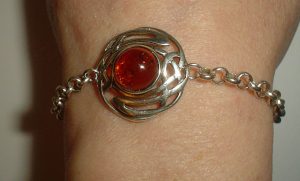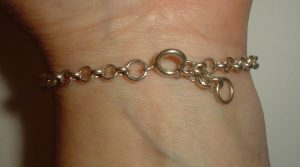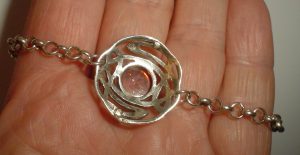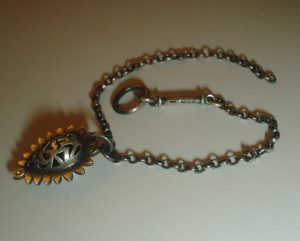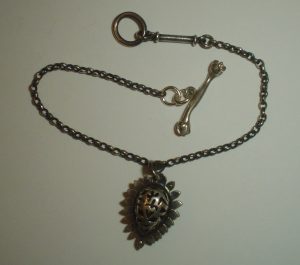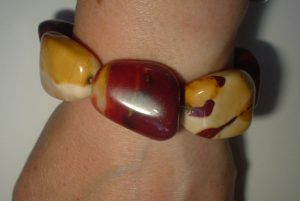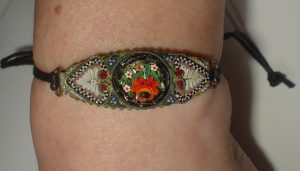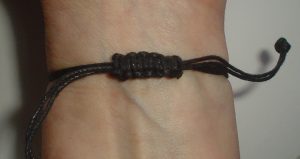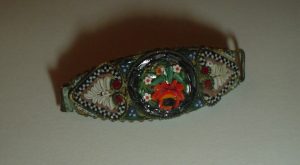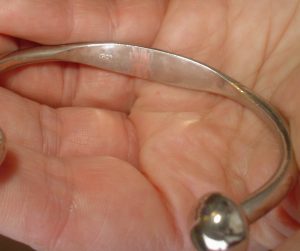One of the boxes of bits I won at my local auction some time last year contained some small bags of beads, including coral and some rather lovely turquoise nuggets. I wanted to thread these onto waxed cord, but the cord was too thick to thread through the holes. Last week, I finally got round to buying some silver wire. This bracelet is my first ever attempt at using silver wire to create beaded jewellery:

The wire I bought was 22 gauge, which is 0.64 mm in diameter. It turned out to be just the right thickness for the project – sturdy without being too rigid. I used some 1 mm thick, 3 mm diameter jump rings to extend the length a bit, and added a lobster clasp that I’d salvaged from a broken silver chain. Not being that up on beading terminology it took me a while to find a useful set of instructions on the internet, but this page proved to be quite helpful:
http://www.rosarymakersguide.org/plierswires.htm
You would need to scroll down to the section entitled “Make a Wire Rosary”, and go from there. I found I had to experiment with the length of wire that was to form the loops on each end of the beads – 7 or 8 mm was about right; any more, and the loops looked a bit too “leggy”.
The bracelet looks great on its own, or when stacked with some silver bangles:

This is another useful set of instructions:
https://crafts.tutsplus.com/tutorials/how-to-loop-headpins-and-eyepins-to-make-beaded-jewellery–cms-20973
It uses ready made eyepins (pieces of wire which come with a loop at one end), rather than making all the loops from scratch.
And finally, here’s another:
https://www.artbeads.com/design-studio/make-a-simple-loop/
Actually this one’s the best of the lot, because the pictures are so much clearer.
Anyway, I had fun doing this bracelet … as much fun as you can have anyway, when the temperature in your living room is 27.5 deg. C and you don’t have air conditioning.









